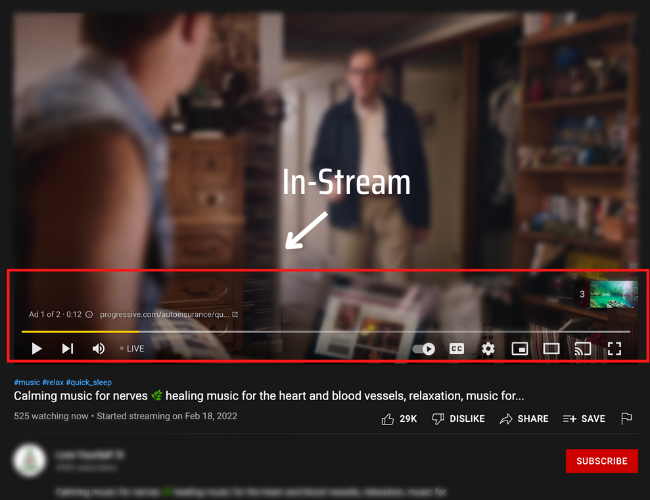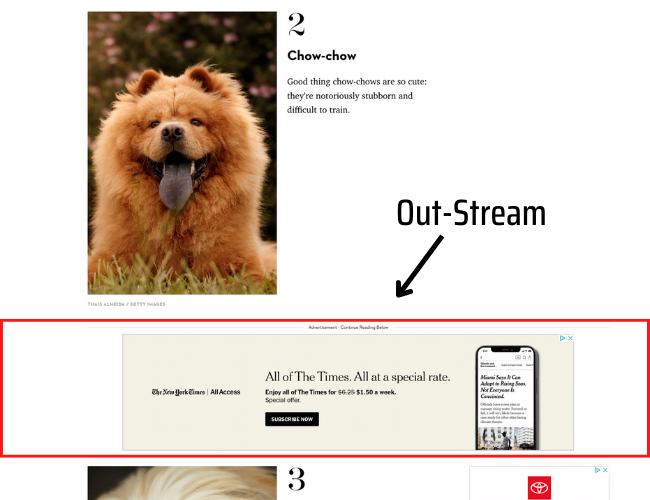What is Programmatic Video Advertising? A Guide for Agencies
| Pathlabs Marketing |
| November 19, 2025 |
Agencies face mounting pressure to deliver high-impact video campaigns that captivate audiences and drive results. Clients expect proof that every video impression is working, while lean teams juggle tight timelines, fragmented platforms, and limited bandwidth. Traditional ad-buying methods slow teams down with time-consuming negotiations and inefficiencies, leaving many agencies asking: "How do we launch video campaigns faster without losing control of targeting and budget?"
Enter programmatic video advertising, a data-driven, automated solution that transforms how agencies execute video campaigns. Here's what you need to know about programmatic video, from its game-changing benefits to best practices for scaling campaigns with precision.
What is Programmatic Video Advertising?
Programmatic video advertising is the automated selling and insertion of ads into video content, such as online video and streaming video services. Programmatic video gives advertisers access to better targeting, measurement, and retargeting to execute campaigns with great efficiency.
Programmatic video allows marketers to insert ads into spaces that are likely to reach potential customers. In the case of video, there are a plethora of places to insert ads. This includes banner ads, preview ads, social media reels, or CTV placements.
Traditionally, marketers contacted website owners directly to negotiate ad placement. This was time-consuming and offered little control over who saw the ad.
With programmatic video, this manual system is gone. Communication with ad vendors is automated using media planning tools or Demand-Side Platforms (DSPs). Marketers plug in ad content and budget, then the platform navigates ad exchanges to buy space automatically.
For agencies managing dozens of campaigns, this automation makes negotiation a scalable, repeatable workflow.
AI and machine learning review audience behavior to find the best placements and allocate budgets in milliseconds.
Advertisers no longer throw darts blindfolded; machine learning helps hit the target every time.
Q&A Takeaways:
Q: What problem does programmatic video actually solve?
A: It removes manual buying and guesswork, replacing them with automated auctions that place your video in front of the right audience at the right time.Q: Is it only for big brands?
A: No. Independent agencies can use programmatic video to compete with larger players by tapping into the same inventory and data, often with the help of a media execution partner (MEP).
For a deeper foundation on programmatic as a whole, read Pathlabs’ explainer on programmatic advertising KPIs and media buying basics.
The Benefits of Programmatic Video Advertising
Programmatic video acts as a control center for your video spend by automating the purchase of impressions so you reach users where they are most receptive. It speeds up execution, sharpens targeting, and surfaces data your team can act on when time and resources are limited.
Less Time Talking, More Time Executing
By placing video ads programmatically, advertisers don’t need to negotiate with publishers. DSPs handle ad placements automatically. For agencies without DSP access, Media Execution Partners (MEPs) manage the process, allowing your team to focus on creative ideas and audience strategy instead of chasing insertion orders.
Buckets of Data
Programmatic platforms powered by AI provide real-time insights. You can track metrics like completion rate, view-through rate, and cost per completed view in one dashboard, tie results to client goals, and quickly see which creative and which audience perform best. Centralized reporting enables mid-flight optimization and precise ROI measurement.
These data “buckets” help answer key questions: “Which creative drove the most views?” or “Which audience engaged most?” Centralized reporting enables mid-flight optimization and precise ROI measurement.
More Bang for Your Buck
Algorithms evaluate each impression in real time, deciding whether to bid and what creative to serve. This maximizes every dollar and ensures efficient reach across CTV, web, and social video.
High Traffic From Your Demographics
Programmatic tech layers demographic and behavioral data for precise targeting. Segment by age, location, interests, or retail data to reach relevant audiences.
A regional agency can serve tailored creative to parents streaming kids’ shows, sports fans, or B2B buyers all within one campaign.
Surf Through Different Channels
Automation enables omnichannel strategies across social media, web, search, and CTV. A single campaign can follow audiences from a CTV spot to a pre-roll to a social feed, reinforcing consistent storytelling.
How Programmatic Video Advertising Works
Programmatic ensures ads reach relevant audiences efficiently. From an agency view: (1) define your audience, (2) choose platforms, (3) use auctions to win impressions.
When a user loads a video, an automated auction happens in milliseconds. Algorithms analyze user behavior and demographics, then execute ad buys and adjust bids based on performance. The highest bidder matching the audience wins the impression—this is Real-Time Bidding (RTB).
Platforms adjust bids automatically, shifting spend toward higher-performing placements, optimizing continuously without manual work.
Demand Side Platforms (DSPs)
DSPs let advertisers buy ad space across multiple publishers from one interface. They enable audience segmentation, geo-targeting, device-specific ads, and behavioral triggers while optimizing performance.
Agencies can work with a media execution partner to access DSP benefits without managing platforms directly.
Supply-Side Platforms (SSPs)
Publishers use SSPs to manage inventory and ensure brand-safe, verified environments. Understanding SSPs helps agencies explain placement transparency and brand safety to clients.
Types of Video Ads
Agencies encounter many video ad types. The right one depends on goals, budget, and audience tolerance for interruption.
What Are In-Stream Ads?
Video advertisements inserted directly into video content at the beginning (pre-roll), middle (mid-roll), or end (post-roll) of a video stream.
Best for: Awareness.
Agency insight: High viewability, but can frustrate or lose attention depending on placement. The average viewer only watches 50-60% of videos.
What Are Out-Stream Ads?
Video ads placed in locations like web articles or pages. These are most commonly inserted between clumps of text to catch readers' attention while scrolling.
Best for: Mid-funnel engagement on editorial sites.
Agency insight: Effective but vulnerable to over-saturation; ads lower on long pages may be unseen.
What Are In-Display Ads?
Appear in search results and discovery feeds.
Best for: High-intent search behavior.
Agency insight: Marked “AD,” so users may skip them; best for bottom-funnel intent.
Mapping Ad Types to the Funnel
Use in-stream for awareness, out-stream for engagement, and in-display for high-intent conversions.
Programmatic Video Best Practices
Winning agencies stay realistic about what their budgets can deliver, use video primarily for awareness, align KPIs with their buying methods, and answer five questions before launch:
Who are we trying to reach?
What action do we want them to take?
Which metrics prove success?
What budget and flighting do we have?
How will we test, learn, and optimize over time?
Programmatic Elements
Do thorough research. Agencies typically implement software like The Trade Desk, or outsource to a media execution partner, to fit their needs.
Know the target audience. This doesn’t have to be perfectly nailed down, but the more info provided, the better the AI will perform in reaching your target customers.
Know campaign objectives. What is the goal of your advertising campaign? DSPs or MEPs will better meet these objectives if a framework is laid down. It is important to make clear objectives and track them to ensure that the programmatic software or MEP is meeting all expectations.
Know your budget. Without a clearly defined budget, you may overspend or underspend. You may even reap few rewards.
For reporting, define 1–2 primary KPIs before launch, such as video completion rate, cost per completed view, or on-target reach, then support them with secondary metrics like click-through rate or view-through conversions. For more detail, you can reference Pathlabs’ guide to paid media KPIs when building dashboards and client reports.
Creative Elements
Since videos offer a chance to truly connect with audiences, they should include:
Your logo: Include visual branding that customers associate with your agency or business. Make it clear who's behind the message.
Call to action: Motivate your audience to take the next step. Whether it's visiting a website, downloading an app, or making a purchase, make the path forward crystal clear.
Brevity: Keep video ads succinct and to the point. You have a small window to capture attention. Respect your viewer's time.
Engage and reflect: Tell a story that shows personality. Gain audience attention with compelling colors, visual elements, authentic performances, and narratives that resonate.
Multi-Format Creative Strategy
When planning creative for programmatic environments, build multiple versions that match each placement:
6-10 second ultra-short cuts for social or out-stream.
15-30 second stories for CTV and in-stream.
Vertical formats where mobile viewing dominates.
Test-and-Learn Framework
Build a simple test-and-learn framework for continuous improvement:
Start each campaign with a clear hypothesis (e.g., "15-second CTV creative will drive higher video completion rates than 30-second spots.")
Run structured A/B tests on creative, audiences, and formats.
Use results to refine future flighting, budgeting, and storytelling.
Challenges of Programmatic Video
Ad Fraud
Since ads run in automated environments, they're vulnerable to bot traffic, spoofed domains, and fake impressions that distort performance data.
Solution: Use premium, verified inventory, pre-bid/post-bid verification, and inclusion lists to maintain quality and brand safety.
Data Complexity and Misaligned Reporting
AI data can be complex, leading to misinterpretation. Campaigns may look good on surface metrics, but fail business goals.
Solution: Define key KPIs and partner with experts who translate metrics into business outcomes. Build dashboards that tell a story.
Lack of Control and Knowledge
With programmatic video, software often handles ad placement decisions. This can be a tough transition for teams accustomed to manual control. Marketers may not know if AI is working efficiently, potentially resulting in budgeting errors, failed placements, or ads appearing on inappropriate sites.
Solution: Choose transparent DSPs or media partners who provide visibility and frequent audits. Use brand safety tools and clear communication protocols.
Programmatic Video Solutions for Agencies
Programmatic video automates ad buying, improves targeting, and optimizes in real time. Features like audience segmentation, budget control, and cross-channel reach simplify campaign management and boost visibility.
By leveraging these tools, agencies reduce complexity, improve ROI, and scale efficiently. This data-driven approach ensures smarter placements and stronger engagement.
As your approach matures, programmatic video becomes more than a tactic. It becomes a repeatable engine for awareness, engagement, and performance.




